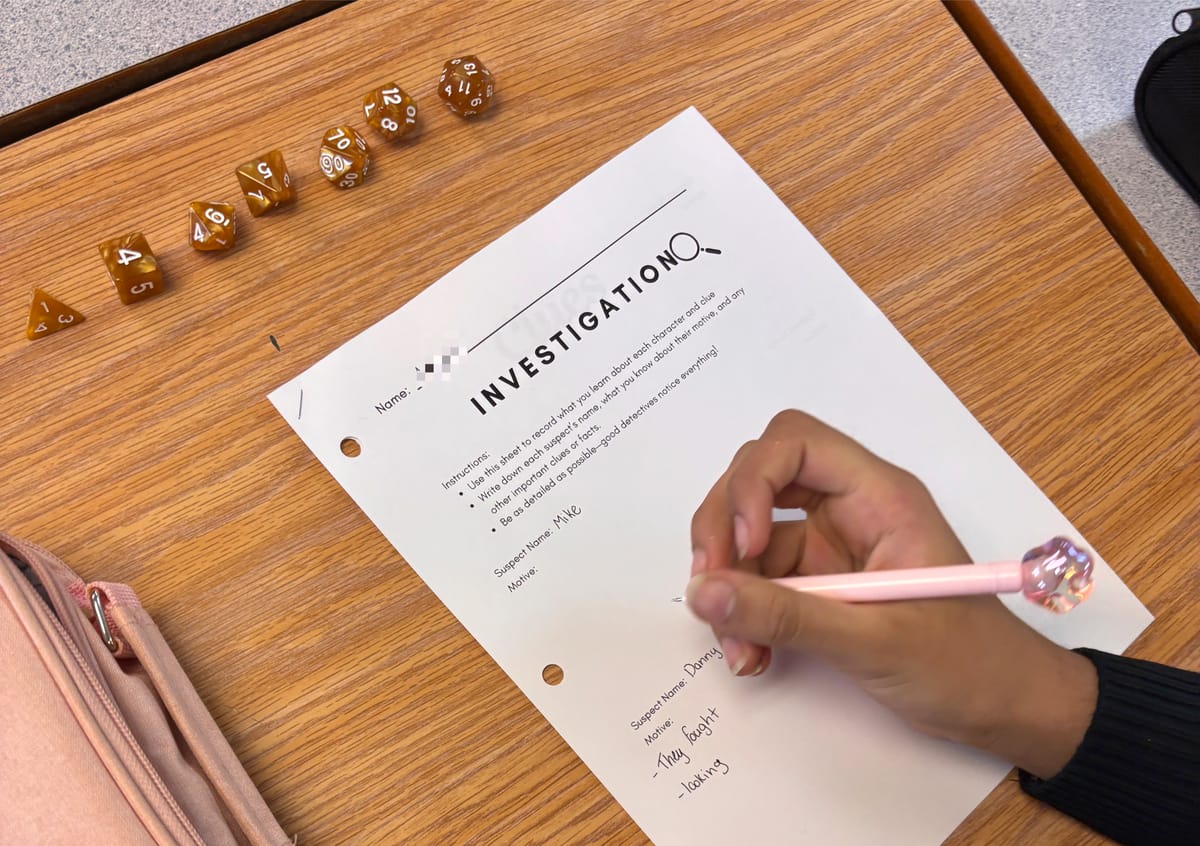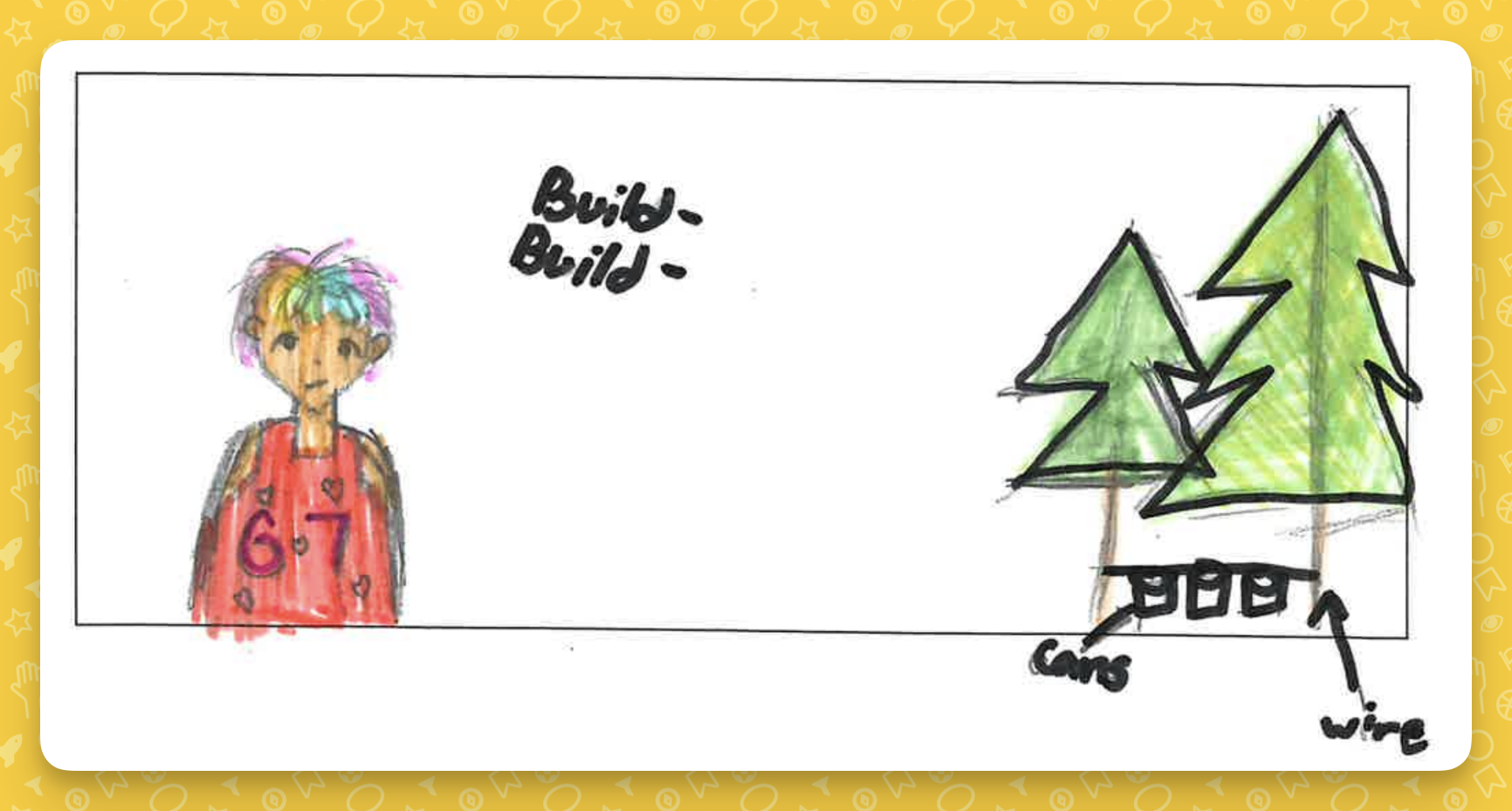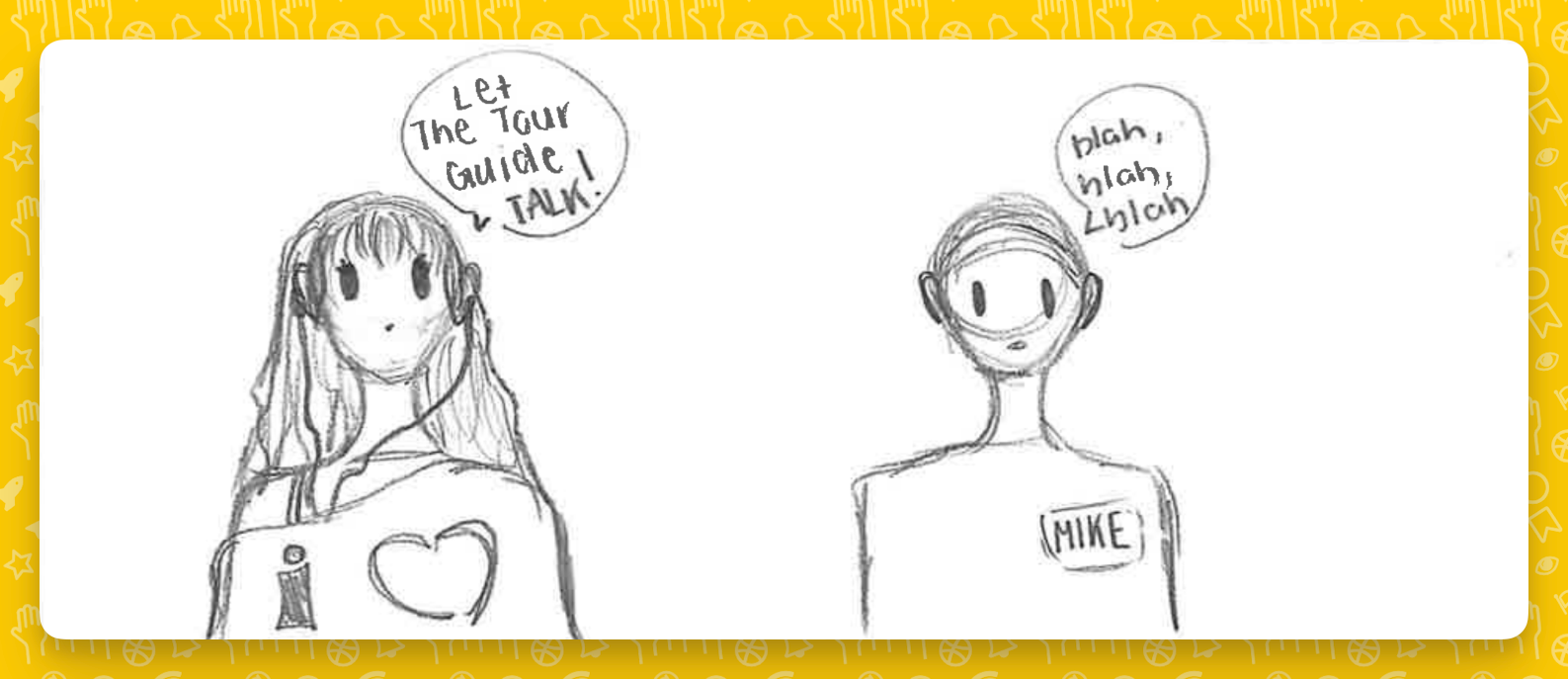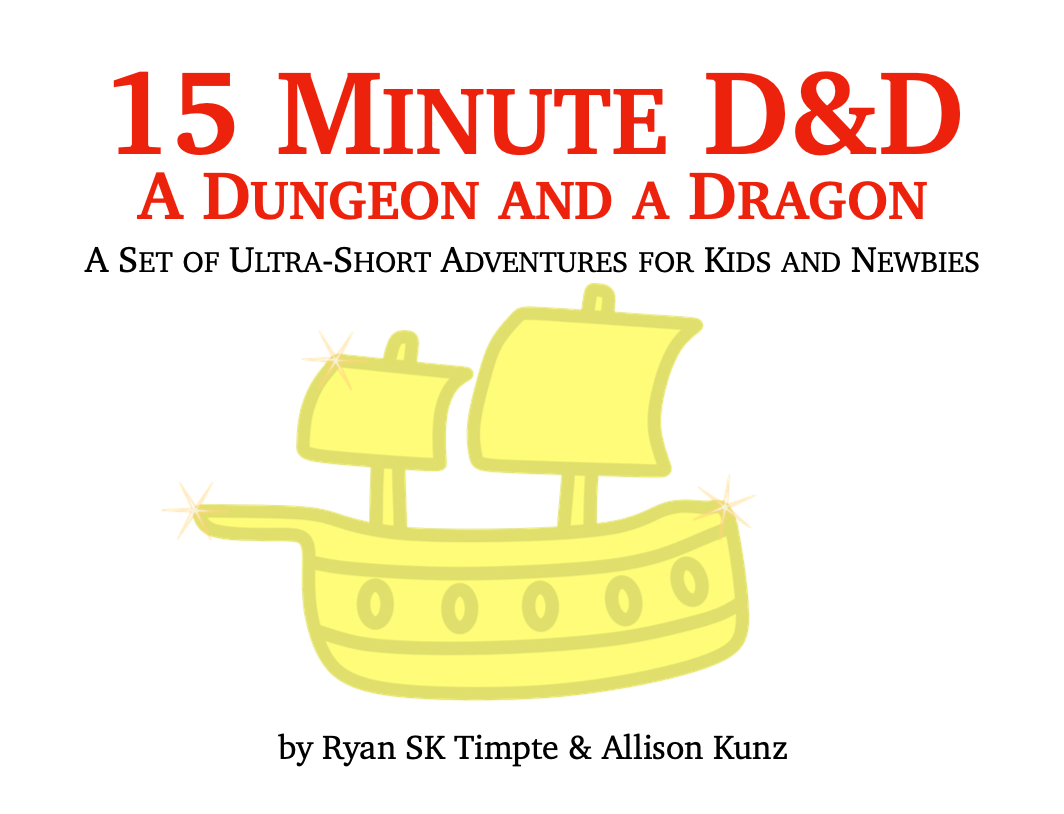The last time we wrote about our Grade 7s playing Dungeons & Dragons, we focused on what it felt like in the room. Dice, debates, decision making and an unmasked monster!

After the dust settled and the ghosts were caught, we wanted to know more: what did the students actually take from it?
So we asked them!
Their reflections ended up revealing far more than whether they enjoyed the game (they did). They showed how naturally students engaged in complex literacy skills when the text wasn’t a book, but instead a character sheet and a branching storyline.
They talked about choice, perspective, teamwork, and making decisions that only made sense once they fully stepped into their characters’ shoes.
Student Choice and Agency 🙌
“I enjoyed making our own decisions: the plot, the sound effects, and interacting with others to make choices.”
One of the loudest themes in the students’ reflections was agency. The thrill of making decisions, rolling dice and debating options in their group was a huge hit. Everyone felt like they were steering the story somewhere new. The story responded to them.
Role-playing games naturally give students ownership of their learning. They’re asked to think critically about consequences and make decisions supported by the traits of their characters.
When a Grade 7 says, “Every different action changes the story,” they’re describing cause-and-effect. When another says, “The whole ending of the game was left in our hands,” that’s personal agency tied directly to narrative thinking.
Choice also becomes a gateway to collaboration. Once students realize their decisions shape the entire group’s outcome, the choices become heavier, more important. Disengagement turns into investment. Passive students become opinionated. The class starts defending ideas, weighing risks and making predictions! That’s exactly the kind of engaged thinking we’re aiming for in the Creative Thinking Core Competencies.
And because the story can’t move forward without them, agency becomes the hook that pulls students deeper into communication and teamwork. The dice might determine success, but the choices—big, small and occasionally ridiculous—are theirs.
Collaboration and Perspective Taking 🤝
“When we wanted to do this, but one person wanted to do something else, we really had to convince them to follow the majority.”
Almost every group ran into a moment where their ideas clashed. Sometimes it was small—arguing over a character name, or who got to roll first. Other times it was bigger, like convincing the entire group to follow through with a plan. Every time the pattern was the same: they had to pause, listen, justify and adjust.
One student shared, “there was a time when we were arguing about which option we should take. We handled this by viewing each other’s point of view.”
As they expressed their ideas, they were learning how to read the room, weigh other people's perspectives and decide whether they should stand firm or step back. One student put it simply, “when all the groups had to work together to trap the ghosts, we came up with the idea as a team.”

In a traditional reading lesson, we might ask students to analyze a character’s motivations. Here, they had to analyze each other’s motivations as well! The story couldn’t continue until they reached consensus.
RPGs turn teamwork into a live problem: everyone has a stake, everyone has a voice, and the plot only works when the group finds a way to move together.
Collaboration is the engine of role-playing games.
Decision Making Through Characterization 🤔

Once the groups settled into the rhythm of the game, their decision-making solidified. They started choosing actions as the character. Someone with a specific set of strengths, weaknesses and instincts. Students had to justify their choices the way strong readers do: by using evidence.
“Understanding my character helped me make decisions in the game, because I knew what actions she would do. Even if they weren’t something I would originally do, I would have to choose it. Also, if I didn’t do that it just wouldn’t make sense.”
That’s character comprehension in its purest form! They’re connecting traits to actions, interpreting motivations and using textual evidence. Except the text in this case is a character sheet with a list of traits and a backstory.
A student who says, “we couldn’t run because our character is not athletic,” is making an inference. A group who chooses persuasion over intimidation because “that wasn’t one of our strengths” is making a text-based decision. Another student said, "this helped us decide that we would punch Taylor, and even though that was a bad choice it helped us learn about our character.”

The roleplay also nudged students into empathy. They had to act from inside a point of view that wasn’t their own, even when it didn’t match their real-life instincts.
One student wrote, “It taught me to put myself in other people’s shoes, because sometimes I tell people to be better when they physically can’t.” These are the exact comprehension moves we hope readers make when engaging with literature: interpreting motivation, recognizing traits, and understanding how those traits shape outcomes.
Role-Playing Games as Text 📙
Once you strip away the dice and the noise, what students were really doing was working with a text—just not a traditional one. The story existed in character sheets, clues, consequences, and the choices each group made. They had to interpret information, predict outcomes, and adjust their thinking as new details appeared.
The class was actively engaging with ELA competencies around comprehending and connecting ideas in text.
Students reflected this naturally. One wrote, “Understanding my character helped me make decisions in the game that made sense and helped everyone.” Another said, “Everyone has different characteristics, and this shows that everyone is not the same. We find each other’s strengths and put them to use.”
Even limitations became textual cues: “We couldn’t run because our character is not athletic,” or “We remembered he wasn’t very persuasive, so we let the other people handle it.” These are students recognizing constraints, interpreting traits, and thinking creatively.
In an RPG, the feedback is immediate. If their interpretation fits the world, things move forward; if not, the story pushes back. RPGs turn the usual skills of reading comprehension: predicting, inferring, evaluating, and considering perspective into active decision-making.
Play Games in your Classroom
All of this points to one thing: role-playing games are an effective teaching tool for narrative literacy.
- They give students real choices, so cause-and-effect becomes something they feel.
- They push groups to negotiate meaning, so communication and perspective-taking aren’t just abstract skills.
- They force students to act from inside a character, which strengthens inference and evidence-based decision-making.
- And because the story responds to them in real time, comprehension isn’t optional. You can’t move forward unless you understand what’s happening.
In other words, role-playing games are literacy. Interpreting text, connecting ideas, evaluating actions, and considering point of view are both the engine of the game and at the core of teaching narrative literacy. The students’ reflections made it clear: when the narrative is something they help build, their engagement and their thinking rise to meet it.
Need somewhere to start?

First, play 15 Minute D&D. It's a really easy and straightforward way for kids to learn the ins and outs of Dungeons and Dragons. Next, check out The Tiny Teahouse written by the same fine folks over at The Kids Table.
Finally, check out TTRPGkids for a huge list of resources. I especially like this article on teaching Social Studies through Table Top RPGs.
Have fun!


